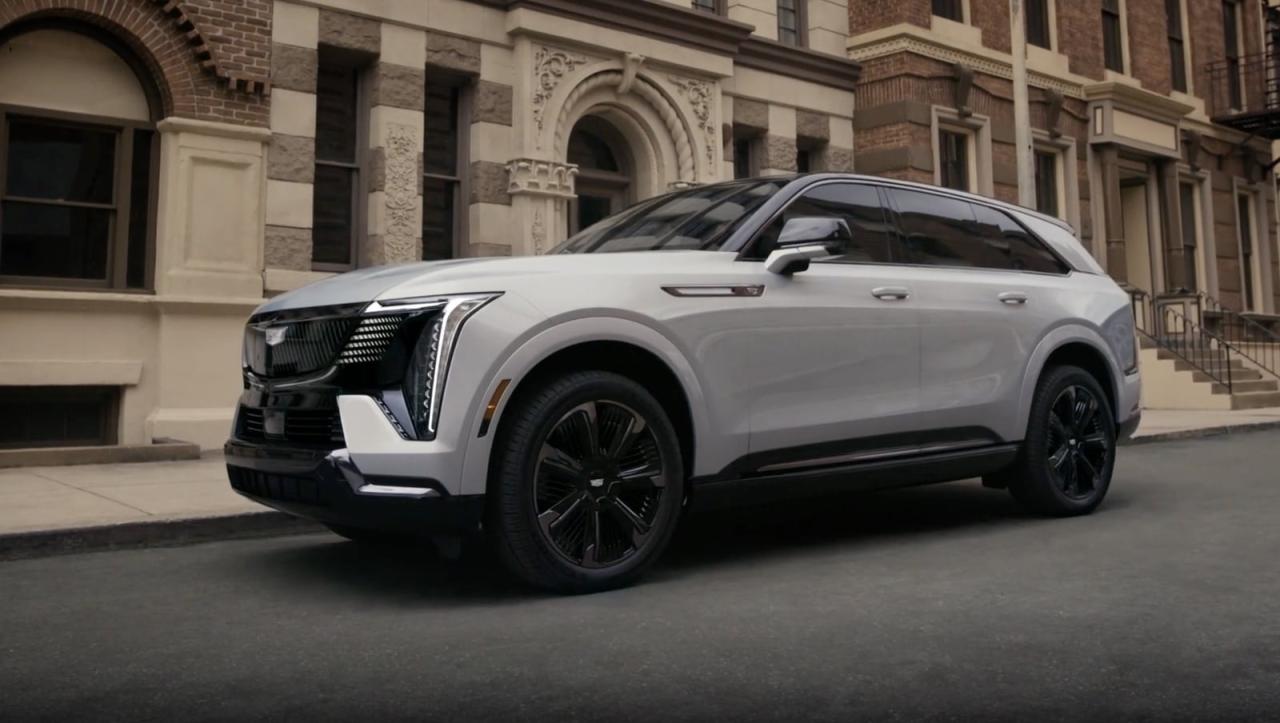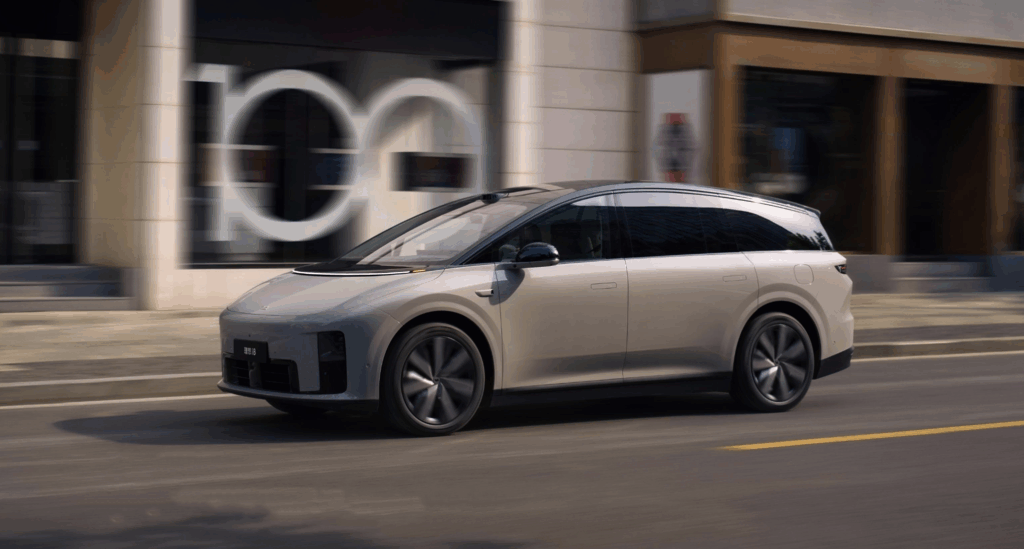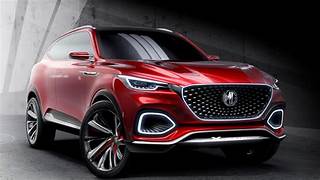The automotive landscape has undergone a remarkable transformation as we progress through 2025, with electric sport utility vehicles emerging as the undisputed champions of the modern vehicle market.
This seismic shift represents more than just a passing trend—it signifies a fundamental reimagining of what consumers expect from their vehicles and how manufacturers are responding to evolving environmental consciousness, technological advancement, and changing lifestyle preferences.
The Revolutionary Rise of Electric SUVs
The dominance of electric SUVs in today’s market didn’t happen overnight.
This phenomenon is the culmination of years of technological innovation, infrastructure development, and shifting consumer attitudes toward sustainable transportation.
What makes this particularly noteworthy is the speed at which this transformation has occurred, outpacing even the most optimistic predictions made by industry analysts just five years ago.
Traditional internal combustion engine vehicles once held an unshakeable grip on the SUV segment, but the tide has turned dramatically.
Electric SUVs now account for a substantial portion of new vehicle registrations across major markets worldwide, with some regions reporting that battery-electric SUVs comprise over forty percent of all SUV sales.
This remarkable penetration rate demonstrates that electric propulsion is no longer a niche choice but has become mainstream consumer preference.
Understanding the Consumer Appeal

Performance That Exceeds Expectations
Modern electric SUVs deliver performance characteristics that surpass their gasoline-powered predecessors in numerous ways.
The instant torque delivery inherent to electric motors provides acceleration that rivals sports cars, with many models capable of sprinting from zero to sixty miles per hour in under four seconds.
This impressive performance doesn’t come at the expense of refinement—electric SUVs operate with whisper-quiet cabins, eliminating the noise and vibration traditionally associated with internal combustion engines.
The driving experience in contemporary electric SUVs feels futuristic yet accessible.
Regenerative braking systems not only extend range but also provide a unique one-pedal driving experience that many owners find intuitive and enjoyable.
The low center of gravity, achieved by mounting heavy battery packs beneath the floor, results in handling characteristics that defy the typically top-heavy nature of traditional SUVs.
Range Anxiety Becomes Range Confidence
One of the most significant barriers to electric vehicle adoption has historically been range anxiety—the fear of running out of charge before reaching a destination.
However, the latest generation of electric SUVs has effectively eliminated this concern for the majority of users.
Many current models offer real-world ranges exceeding three hundred miles on a single charge, with premium offerings pushing beyond four hundred miles.
This extended range capability means that electric SUVs now comfortably handle the daily driving needs of virtually all consumers.
The average American drives fewer than forty miles per day, meaning that most electric SUV owners could theoretically go an entire week without charging.
For longer journeys, the rapidly expanding fast-charging infrastructure enables quick top-ups during rest stops, with some vehicles capable of adding two hundred miles of range in just fifteen minutes of charging.
Economic Advantages Drive Adoption
The total cost of ownership for electric SUVs has reached a tipping point where they now compete favorably with conventional alternatives.
While the initial purchase price remains higher in many cases, this premium is offset by significantly lower operating costs.
Electricity costs substantially less than gasoline on a per-mile basis, with typical savings ranging from fifty to seventy percent depending on local energy prices and driving patterns.
Maintenance requirements for electric SUVs are dramatically reduced compared to traditional vehicles.
The absence of oil changes, transmission services, spark plug replacements, and exhaust system repairs results in maintenance cost reductions of approximately thirty to fifty percent over the vehicle’s lifetime.
Additionally, regenerative braking significantly extends brake pad life, sometimes allowing them to last the entire life of the vehicle.
Government incentives and tax credits further improve the economic equation.
Many jurisdictions offer substantial purchase incentives, tax rebates, or reduced registration fees for electric vehicles.
Some regions also provide access to high-occupancy vehicle lanes regardless of passenger count, offering time savings that translate to real economic value for commuters.
Technological Innovations Driving Market Leadership

Battery Technology Breakthroughs
The heart of any electric vehicle is its battery pack, and recent advancements in battery technology have been nothing short of revolutionary.
Solid-state batteries are beginning to enter production, promising significantly higher energy density, faster charging times, and improved safety characteristics compared to conventional lithium-ion technology.
These next-generation batteries can potentially double the range of electric SUVs while reducing charging times to mere minutes.
Battery management systems have become increasingly sophisticated, employing artificial intelligence to optimize charging patterns, predict range with remarkable accuracy, and maximize battery longevity.
Modern systems can precondition batteries before charging sessions to ensure optimal charging speeds and can learn from driving patterns to provide personalized range estimates that account for individual driving styles and typical routes.
Thermal management systems now maintain battery packs within optimal temperature ranges regardless of external conditions, ensuring consistent performance in both extreme heat and bitter cold.
This advancement addresses one of the most significant criticisms of early electric vehicles, which suffered reduced range and performance in cold weather.
Advanced Driver Assistance Systems
Electric SUVs have become showcases for the latest autonomous driving technologies.
The integration of multiple sensor types—including cameras, radar, lidar, and ultrasonic sensors—creates a comprehensive understanding of the vehicle’s surroundings.
These systems enable features such as adaptive cruise control, lane-keeping assistance, automatic emergency braking, and even hands-free highway driving in some models.
The connection between electric powertrains and advanced driver assistance is more than coincidental. Electric vehicles’ drive-by-wire systems, where mechanical connections are replaced by electronic controls, provide the precise actuator control necessary for advanced automation features.
This electronic architecture also enables over-the-air software updates that can continuously improve and add functionality throughout the vehicle’s life.
Connectivity and Infotainment Evolution
Modern electric SUVs serve as rolling computers, offering connectivity features that seamlessly integrate with users’ digital lives.
Large touchscreen interfaces, often spanning the entire dashboard, provide intuitive control over vehicle functions and entertainment options.
Voice recognition systems powered by natural language processing understand conversational commands, reducing driver distraction.
Smartphone integration has evolved beyond simple mirroring, with dedicated applications allowing remote climate preconditioning, charge monitoring, and even vehicle-to-home power supply during outages.
Many electric SUVs now feature built-in cellular connectivity, enabling real-time traffic updates, over-the-air software updates, and enhanced security features like remote immobilization in case of theft.
Market Segment Analysis
Luxury Electric SUVs Lead Innovation
The premium segment continues to push boundaries with electric SUVs that redefine luxury.
These vehicles feature sumptuous interiors crafted from sustainable materials, advanced air suspension systems that provide cloud-like ride quality, and performance capabilities that rival dedicated sports cars.
Manufacturers in this space aren’t simply electrifying existing models but creating entirely new platforms designed from the ground up for electric propulsion.
Luxury electric SUVs command premium prices, with top-tier models exceeding six figures.
However, these vehicles justify their cost through cutting-edge technology, exceptional build quality, and features previously unavailable in any vehicle.
Some luxury electric SUVs offer massage seats with dozens of adjustment settings, advanced sound systems with studio-quality audio, and even built-in air purification systems that create cabin environments cleaner than the outside air.
Mid-Range Models Capture Mass Market
The mid-market segment has experienced explosive growth as manufacturers introduce electric SUVs priced competitively with conventional alternatives.
These vehicles balance features, performance, and affordability, making electric propulsion accessible to mainstream consumers.
Mid-range electric SUVs typically offer ranges between two hundred fifty and three hundred fifty miles, acceleration times under six seconds, and feature sets that would have been considered premium just a few years ago.
This segment’s growth has been crucial to overall market expansion.
As production volumes increase and manufacturing processes mature, economies of scale continue driving prices downward.
Several manufacturers now offer electric SUVs with starting prices below forty thousand dollars before incentives, making them financially accessible to a broad demographic.
Compact Electric SUVs Urban Popularity
Smaller electric SUVs have found particular success in urban environments where their compact dimensions simplify parking while still providing the elevated seating position and cargo flexibility that make SUVs appealing.
These vehicles often feature shorter ranges than their larger siblings—typically one hundred fifty to two hundred fifty miles—but this proves more than adequate for city driving patterns.
The efficiency advantages of electric propulsion shine particularly bright in urban settings.
Stop-and-go traffic, which devastates the fuel economy of conventional vehicles, actually enhances electric vehicle efficiency through regenerative braking.
City dwellers also benefit from the zero-emission nature of electric vehicles, contributing to improved urban air quality.
Infrastructure Development Supporting Growth
Charging Network Expansion
The charging infrastructure supporting electric vehicles has expanded at a breathtaking pace.
Public charging stations now number in the hundreds of thousands across developed markets, with rapid growth continuing in developing regions.
Fast-charging stations along major highways have largely eliminated range anxiety for long-distance travel, with charging locations spaced conveniently to accommodate even the shortest-range electric vehicles.
Private charging solutions have also evolved significantly.
Level 2 home charging stations can fully replenish an electric SUV overnight, and many utilities offer special electric vehicle charging rates during off-peak hours, further reducing operating costs.
Workplace charging has become increasingly common, with many employers offering charging as an employee benefit.
Grid Integration and Smart Charging
The electrical grid’s capacity to support widespread electric vehicle adoption has been a topic of considerable discussion.
Forward-thinking utilities have implemented smart charging programs that incentivize charging during periods of low demand or high renewable energy generation.
These programs benefit both vehicle owners through reduced electricity costs and utilities through more efficient grid utilization.
Vehicle-to-grid technology represents an emerging frontier where electric SUVs can serve as distributed energy storage, potentially supplying power back to the grid during peak demand periods.
While still in early stages, this technology could transform electric vehicles from mere consumers of electricity into valuable grid assets that enhance overall energy system resilience.
Environmental Impact and Sustainability
Lifecycle Emissions Analysis
The environmental benefits of electric SUVs extend well beyond zero tailpipe emissions.
Comprehensive lifecycle analyses demonstrate that even when accounting for manufacturing emissions and electricity generation, electric vehicles produce significantly lower total emissions than conventional alternatives over their lifetimes.
As electricity grids incorporate increasing proportions of renewable energy, this advantage continues to grow.
Battery production has historically represented the most carbon-intensive aspect of electric vehicle manufacturing.
However, improvements in production processes and increasing use of renewable energy at manufacturing facilities have substantially reduced these emissions.
Additionally, battery recycling programs are maturing, enabling the recovery and reuse of valuable materials, further reducing environmental impact.
Sustainable Manufacturing Practices
Automakers producing electric SUVs have increasingly embraced comprehensive sustainability initiatives.
Many manufacturing facilities now operate on renewable energy, with some achieving carbon neutrality in their production processes.
Water conservation, waste reduction, and responsible sourcing of materials have become central to corporate strategies.
Interior materials increasingly come from sustainable or recycled sources.
Vegan leather alternatives made from innovative materials like mushroom leather or recycled plastics offer luxury feel without animal products.
Recycled ocean plastics find new life as carpeting and interior trim pieces, demonstrating that sustainability and premium quality need not be mutually exclusive.
Challenges and Future Outlook
Raw Material Sourcing Concerns
The rapid growth of electric vehicle production has raised concerns about the supply of critical raw materials, particularly lithium, cobalt, and nickel required for battery production.
While current supplies appear adequate for near-term demand, long-term sustainability requires diversification of supply sources and development of alternative battery chemistries that reduce or eliminate reliance on scarce materials.
Mining and processing of battery materials carry environmental and social implications that the industry must address.
Responsible sourcing initiatives, improved mining practices, and development of domestic supply chains in major markets represent important steps toward sustainable long-term growth.
Continued Price Reduction Necessity
While electric SUV prices have declined significantly, they generally remain higher than comparable conventional vehicles.
Further price reductions are necessary to achieve mass-market penetration across all demographic segments.
Industry analysts project that battery costs will continue declining, potentially reaching price parity with conventional vehicles by the end of the decade.
Infrastructure Gaps in Rural Areas
While urban and suburban charging infrastructure has developed rapidly, rural areas often lag behind.
Addressing this disparity is crucial for ensuring that electric SUVs can serve the needs of all consumers regardless of location.
Government initiatives and private investment continue working to close these gaps, but progress remains uneven across different regions.
Investment Opportunities in the Electric SUV Sector
The electric SUV boom has created substantial investment opportunities across multiple sectors.
Battery manufacturers, charging infrastructure companies, and raw material suppliers have all seen significant growth.
Technology companies providing software solutions for autonomous driving, connectivity features, and battery management systems represent another lucrative investment category.
Traditional automotive suppliers are transitioning their product portfolios toward electric vehicle components, with those successfully navigating this transition potentially offering strong investment returns.
Additionally, companies focused on battery recycling and second-life battery applications represent emerging opportunities as the first generation of electric vehicles reaches end-of-life.
Consumer Decision-Making Framework
Evaluating Range Requirements
Prospective electric SUV buyers should carefully assess their actual driving patterns rather than worst-case scenarios.
Most families find that a vehicle with two hundred fifty miles of range comfortably handles daily needs with occasional road trips requiring planning around charging stops.
For households with multiple vehicles, having one long-range conventional vehicle and one electric SUV often provides optimal flexibility.
Charging Infrastructure Access
Home charging access dramatically enhances the electric SUV ownership experience. Buyers should evaluate the feasibility and cost of installing Level 2 charging equipment.
For those without home charging capability, proximity to workplace charging or public fast-charging stations becomes a more critical consideration in the purchasing decision.
Total Cost of Ownership Calculation
Savvy consumers look beyond sticker prices to evaluate total ownership costs.
Online calculators can help estimate fuel savings, maintenance cost reductions, and available incentives to provide a complete financial picture.
In many cases, higher upfront costs are recovered within three to five years through lower operating expenses.
The Road Ahead: Future Developments
The electric SUV market shows no signs of slowing its remarkable growth trajectory.
Upcoming models promise even more impressive specifications, with some manufacturers targeting ranges exceeding five hundred miles and charging times under ten minutes for significant range additions.
Solid-state batteries entering mass production within the next few years could represent another quantum leap in performance and convenience.
Autonomous driving capabilities will continue advancing, with some manufacturers projecting fully autonomous operation within the decade.
This technology could fundamentally transform vehicle ownership patterns, potentially leading to shared autonomous electric SUV fleets that reduce overall vehicle numbers while increasing mobility access.
Design innovation will continue as manufacturers explore the creative possibilities enabled by electric platforms.
Without the constraints of accommodating large engines and complex drivetrains, designers can reimagine vehicle proportions, interior layouts, and storage solutions.
Some concept vehicles suggest futures where interiors transform into mobile living rooms or offices, with rotating seats and reconfigurable spaces.
Conclusion
The dominance of electric SUVs in 2025 represents more than a temporary market trend—it signals a permanent transformation of the automotive industry.
The combination of technological maturity, infrastructure availability, economic competitiveness, and environmental necessity has created the perfect storm for electric SUV adoption.
For consumers, this transformation offers vehicles that are cleaner, quieter, more efficient, and often more enjoyable to drive than their conventional predecessors.
For society, widespread electric SUV adoption contributes to reduced emissions, improved air quality, and decreased dependence on fossil fuels.
For the automotive industry, it represents both a massive challenge and an incredible opportunity to reinvent a century-old business model.
As we look toward the future, the trajectory seems clear: electric SUVs will continue gaining market share, with most major manufacturers committing to predominantly or entirely electric lineups by 2030 or 2035.
The vehicles of tomorrow will be smarter, more connected, more capable, and more sustainable than anything we’ve experienced before.
The electric SUV revolution isn’t coming—it’s already here, and it’s reshaping our roads, our cities, and our relationship with personal transportation.











